Opinion
Viral post from the wife of a police officer who feels her husband is in danger

At this time it is so important to keep the momentum going for systemic changes that have allowed for the death of many people like George Floyd. However it’s important to remember not to go too far. Many people have been tarnishing all police officers with the same brush. Ironically it’s the exactly the same issue society is lashing out against right now.. profiling. Just as it’s important not to profile suspects in major and minor crime investigations, it’s also important for citizens not to profile all police officers.
This post has been shared extensively and it should continue to be shared.
From the Facebook post of Ashley Anderson. Her husband works for the Indiana State Police

I’ve prayed about this for the past few days and decided it was finally time…
I’m done. I’m done. I. Am. Done… For the last week our family has been through hell. (other police families know exactly what I’m talking about) I’ve never been one to stir anything up on social media. I’d rather talk one-on-one, but this is absolutely crazy right now! I’m not posting to argue or change your opinion (I know I can’t do that on fb). I’m breaking my silence to say that the portrayal of Police on TV is not right! It’s not what is actually happening on the streets! And the overall disrespect and hate being thrown at them is unbelievable! STOP IT!!!! The Police are just as saddened by George Floyd’s death as anyone. My husband is going in to work for the 12th day today. 12 straight days… and the last week almost all the days have been from before my girls wake up in the morning to after they go to bed. Why is he doing this? Because he took an oath to defend YOU (the community)!!! He’s missed more than I could ever begin to tell you… our kids bdays, holidays, anniversaries, swim meets, dance shows, campouts, dates, overall LIFE… serving and protecting the community! He has been a police officer for 13 years and has received a great deal of hate over that time, but this last week… I can’t even put in to words the disbelief I see in his eyes… the way he has been broken down in one week from constant hate. In conversation with him he described it like this… “I’m used to being cussed at and yelled at, but never for 12 hours straight – day after day”. STOP IT!!! For 13 years he has sacrificed SO much for this community!!! And might I remind everyone that my husband is one of the absolute best Police Officers! He has had criminals thank him for treating them like humans! What he has done in 13 years is incredible, yet he is having rocks and bottles thrown at him… and having unbelievable things yelled at him – all of which are inappropriate for fb. He’s being told that they hope he goes home to a dead wife! Really! But that’s not on TV. Unless you are wearing a badge during this or have immediate family that is you really have no idea what it’s been like… because no one is telling this side. My girls have cried so much and have seen friends say/post awful things… my son has never been more angry and has had to defend his dad to people saying “save a life – kill a cop” and “if you are currently a cop, you deserve to die” !!! That’s for real people… that’s really what is being said! Imagine what is going through my kids’ heads. They are proud of their dad and have seen what he has had to sacrifice for YOU (the community), but they also see how the Police are now being hated, truly hated. They know that things have been thrown at their dad like rocks, bottles, even explosives and they are scared. I am scared. We’re scared because he will continue to get up every day and go back out there in this hate. Their dad, my husband ( and many Police officers) have kept the community safe for so long. Can you even imagine a community without them? My husband has taken hundreds of intoxicated drivers off the streets, taken unreal amounts of illegal guns and drugs off the streets and community, been fought by criminals so many times it’s scary, comforted crash victims as they wait for the ambulance, taken food to the homeless, taken clothes/toys(our own children’s) to fire victims, saved lives including a young man shot in the neck at a bar on Christmas Eve where my husband shoved gauze in the bullet hole, he’s had conversations over and over about turning their lives around and being better people, he’s shared about Jesus and plays Christian radio in his police car for them to hear, he’s conducted interview after interview where he gets a confession that has surprised even his coworkers, he’s been flipped off by a 6 year old, and had threats made to his life and his family’s, he has stopped burglars off duty, he had a gun pulled from under a driver’s leg and brought up to shoot him that my husband deflected, he has worked in the scorching heat and in blizzards, he has worked double, triple, and quadruple shifts to take down criminals, he’s been scared and he’s been exhausted, but never like right now. STOP IT!!! I’m crying and shaking, just like every day this last week. Prayers to all Police officers and their families, it is a very sad and scary time. In our home we have always taught to love and be kind to everyone (both genders and all colors and cultures). My kids are nice, and I always have told them that being told that from a teacher means more to me than their grades…. ALWAYS! Be a kind human, make someone’s day better… those are things we say in our home… always have, always will. What is happening right now is crazy and scary. It needs to stop! Love God, Love People and lift up the Police in prayer right now please!
I’m not willing to argue with anyone… I just felt the need to get one Police family’s experience out there.

2025 Federal Election
Mark Carney is trying to market globalism as a ‘Canadian value.’ Will it work?
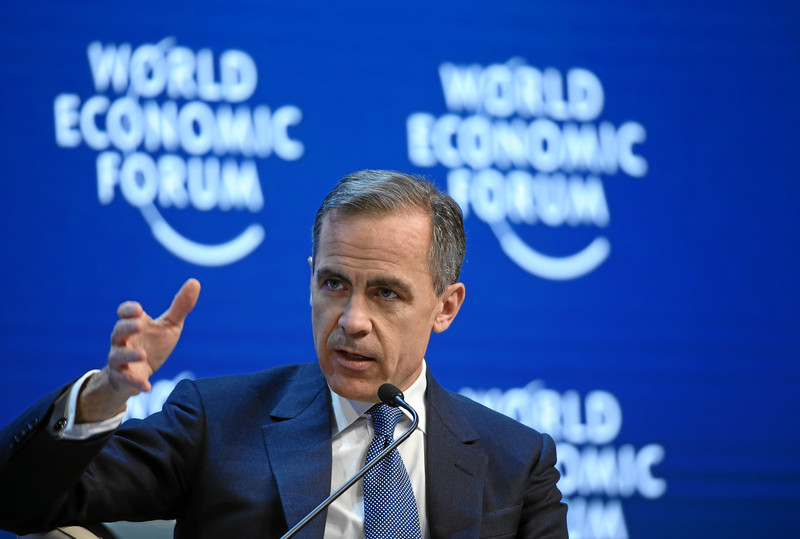
From LifeSiteNews
By Frank Wright
A campaign to appeal to national sentiment is a strange gambit for Liberals – committed as they are to the replacement of the nation with globalist policies.
The storm over Donald Trump’s threatened tariffs over the Canadian border crisis has been baked into a vote-winning meme by Canada’s Liberal Party. Yet with an election only weeks away on April 28, can a sentimental appeal to a vanished Canada secure a win for Mark Carney?
Trump’s tariffs were expected to hit Canada on Wednesday’s “Liberation Day,” refueling a furor over Canadian sovereignty which has led some to say this is “shaping up to be the trade war election.”
Responding to the tariffs, which ultimately never came to fruition in the way the Liberals were warning, a meme war broke out with Carney responding to harsh reality with a feelgood slogan.
Elbows up, Canada. pic.twitter.com/0gJ2opnPjZ
— Mark Carney (@MarkJCarney) March 22, 2025
“Elbows up!” is the new Current Thing in Canada, a media craze designed to stir nationalist indignation in elderly voters who may even remember the 1950s origin of the phrase.
The elbows refer to those of Gordie Howe – a 1950s hockey legend from Saskatchewan – a conservative province – and from a time when Canada was populated by Canadians.
It bears all the hallmarks of an “astroturf” campaign – intended to look authentic, but in reality a manufactured mass belief for marketing purposes.
“Elbows up” seeks to inspire a fighting mood against the threat – or promise – of tariffs on Canadian trade with the U.S.
Carney will ‘cave’
It is a classic example of the manipulation of popular feeling into political allegiance. How will the feelings of aging voters affect the imposition of tariffs? Not at all. Nor will the Canadian Prime Minister be able to stop them.
Insider reports say that Carney will “quietly cave” to Donald Trump over the issue, if the U.S. president does indeed go forward with them.
Prepare for the Carney ‘cave’ on trade with the USA
Ian Bremmer is the boss of Gerry Butts and Mark Carneys wife’s at Eurasia Group. He just told US decision makers that:
“I expect Ottawa will quietly fold shortly after the vote….”
Ian, sitting daily with Carneys inner… https://t.co/PVQIeUzuFQ
— David Knight Legg (@KnightLegg) March 27, 2025
Silence over ‘devastating’ Chinese tariffs caused by Trudeau
Why? Carney has no alternative. He has already “caved” – to China – over the same issue. “Devastating” Chinese tariffs took effect over a week ago in Canada, as Global News reported:
Canadian agricultural producers are warning of devastating impacts from new Chinese tariffs that began Thursday (March 20th), which they say will compound the economic strain from the U.S. trade war.
The tariffs are severe, and will have a dramatic impact – as China is Canada’s second-largest trading partner behind the United States.
“China has imposed a 100 per cent levy on Canadian canola oil and meal, as well as peas, plus a 25 per cent duty on seafood and pork,” the outlet reported.
These tariffs cannot be corrected by hockey memes, and are a response to tariffs placed on Chinese goods by Liberal Prime Minister Justin Trudeau. The Liberal Party – seeking election over outrage on tariffs – has created a tariff crisis, whose costs will be borne by the people who vote for them.
There are no “elbows up” against China. In fact, their tariffs have been greeted with silence from Carney, who has said U.S.-Canada relations are at an end.
Corruption, drug cartels in Canada
Anger at Donald Trump obscures the serious problems which prompted his suggestion that Canada could be absorbed into the United States. “Elbows Up” is a cool way of making Canadians look past the fact that the crisis they inhabit has been created by the Liberals and their globalist agenda.
On February 1, Trump issued an executive order “Imposing duties to address the flow of illicit drugs across our northern border.”
Terry Glavin, writing in January for Canada’s National Post, dismissed Trump’s earlier claims of a crisis over Canadian “border security and drug trafficking” as a “pretext” for his “…declared objective of exerting ‘economic force’ to annex Canada as the 51st American state.”
Yet this too appears to be a fantasy inspired by national sentiment – which simply ignores reality.
As LifeSiteNews reported, Canada’s second bank has laundered over 18 trillion dollars in the U.S. and Canada for Mexican and Chinese drug cartels. The world’s largest fentanyl factory was discovered in Vancouver in February.
Canada a ‘failed state’?
The serious issue of corruption by Chinese Triads combines with a picture of impotent Canadian law and border enforcement to suggest that Canada may be, as Glavin warned, “approaching failed-state status.” When the memes wear off, this is the reality faced by Canadian voters.
Canadians have complained since 2017 that life is too expensive to have a family.
Now “a generation” cannot afford a home, and many struggle to pay for groceries. Help is at hand, however.
Their Liberal government supports Medical Assistance in Dying (MAID) – killing the elderly, poor and ill as healthcare – whilst promoting radical “gender” ideology to help sterilize children.
Will Carney come to the rescue?
Carney is a committed “Net Zero” fanatic, and is the kind of “Catholic” who fervently supports abortion.
His moral integrity is demonstrated further by the fact that his $25 billion “green” investment fund was located in Bermuda to dodge Canadian taxes.
As the Canadian Catholic Register cautions, “[Carney] is a well-connected globalist with deep ties to institutions such as the World Economic Forum, the United Nations, Bank for International Settlements, and the Financial Stability Board.”
Globalist ‘Canadian’ values
National identity is a strange appeal to make on behalf of a party which appears to be working hard to replace Canadians with immigrants, and which is now lead by a globalist technocrat.
It is the values of globalism, of course, which are presented to voters as “Canadian values”: open borders, LGBTQ “rights,” “gender” surgery and hormones for children, and the Net Zero deindustrialization program strongly supported by the Liberal leader Mark Carney.
How long can this appeal to save the nation of Canada from foreign influence convince Canadians to vote for more of the same? The Liberal Party has led Canada into crisis, presiding over corruption so severe that its police, judicial and border authorities are deemed incapable of being trusted by the USA.
This is not a charge made solely by the Trump administration, but also under Biden – with Antony Blinken pressing the matter of the insecurity of the Canadian border as far back as 2022. In the coming weeks, the real issues which have consigned Canada to a fond memory may well shrink the Liberal lead reported by the polls.
What do the polls say?
With some headlines trumpeting an “eight point lead” for the Liberals, others show a narrower advantage for the globalist Carney – and one leading firm has them tied with the Conservatives.
Abacus Data’s March 30 poll had both parties neck and neck at 39%. Abacus, who describe themselves as “Canada’s most sought-after, influential, and impactful polling firm,” “…were one of the most accurate pollsters conducting research during the 2021 Canadian election.”
A second poll shows a narrower lead, and a clear bonus for Carney for simply not being Justin Trudeau.
338 Canada showed a four point lead for the Liberals on March 31, and its graph clearly illustrates that their lead relies on disaffected NDP voters – and the collapse of the Bloc Quebecois vote.
Reality enters the chat
With the issues at home now overtaking Trump and his tariffs, the cost of living and those allied to mass migration such as housing are returning to the forefront of voters’ minds. The issue of reality – and who is the real Mark Carney – may well overtake the fake nationalism of “Elbows up.”
A campaign to appeal to national sentiment is a strange gambit for Liberals – committed as they are to the replacement of the nation with globalist policies – and of its people through mass immigration. Carney has been powerless to halt Chinese tariffs. He is powerless to halt those of Donald Trump.
If Canadians can see beyond cringe hockey memes these two issues are clearly a reaction to the actions and inaction of a Liberal-led Canada. This is the reason that Conservative leader Pierre Poilievre is campaigning on the harm done to Canadians by the “lost Liberal decade.” If Canadians can be persuaded by the argument presented by reality, it seems unlikely they will vote for another – whatever the polls may say.
Health
Selective reporting on measles outbreaks is a globalist smear campaign against Trump administration.

From LifeSiteNews
Ontario has a larger outbreak than Texas. European cases dwarf the Texas outbreak. But the World Health Organization has launched a travel advisory for the United States.
In the currently ongoing outbreak, there have been about 572 measles cases in Ontario, Canada. This is a significantly larger outbreak than the currently hyped one in Texas, which has about 422 cases. The mainstream media has almost completely ignored the Ontario outbreak – their reporting has only focused on the Texas outbreak.
Ontario’s top public health official, Dr. Kieran Moore, does not recommend mandatory vaccination and says the standard public health measures to limit the spread are working. This is a very reasonable response, yet when Sec. Kennedy says something similar; he is viciously attacked.
It is evident by the mainstream media response to the Ontario outbreak versus the Texas outbreak that this is yet another example of the liberal media/pharma machine harassing Kennedy and President Trump.
However, this reporting has an even more sinister aspect – as the media appears to have taken their lead from the World Health Organization.
The World Health Organization has launched a travel advisory for the United States. See the screenshots below (the first screenshot is from an AI summarizer at BRAVE and the second one is from the WHO website):


But what about Canada’s outbreak? Why isn’t Canada mentioned in the travel advisory? Was it an oversight? Did the WHO release a travel advisory just for Canada?
The answer is that the WHO has not put out a travel advisory for Canada, or Ontario, Canada.
In fact, the AI summarizer at BRAVE is clear that the WHO doesn’t put out travel advisories for individual countries, like Canada… The new normal is that the WHO puts out special advisories only for the United States <insert sarcasm>.

And in fact, a search on the WHO website yields not a single mention of the measles outbreak in Canada.

In fact, the WHO places the 422 measles cases in the United States on par with the earthquake in Myanmar, which may have killed up to 10,000 people, all told.
But somehow the 572 cases of measles in Canada don’t deserve a mention.

But wait – the story gets even more bizarre.
The European Region, which includes central Asia, continues to have a significantly high number of measles cases.
The WHO European Region has a population of approximately 745 million people, and had about 127,350 measles cases last year, or 1 in 5,850 people.
Yet – crickets from mainstream media on this factoid.

Why the outcry over 422 measles in Texas?
Here are some ideas:
- To reduce support for RFK Jr., Trump, and MAHA by the American people.
- To scare parents into vaccinating.
- To increase the money going to public health for vaccine stockpiling.
- To support the liberal left in their obsessive hatred of anything MAHA.
- Because the WHO put out a travel advisory.
In the meantime, the WHO has announced that, despite budgetary cuts, they have a $2.5 billion gap for 2025-2027. WHO Director General Tedros correctly blamed Trump for the deficit. However, what Tedros gets wrong is that this deficit is a well-deserved consequence of years of corruption at the WHO leading to this outcome.
This is how it is done, folks.
This is called retaliation by the World Health Organization against the Trump administration.
Another wrap-up smear in action. The deep state and the globalists are pulling out all the stops to attack Trump and Kennedy via “trumped-up” WHO travel advisories and emergency reports that are then reported on breathlessly and uncritically by mainstream media. The propaganda machine continues unabated.
Reprinted with permission from Robert Malone.
-

 Business2 days ago
Business2 days agoCalifornia planning to double film tax credits amid industry decline
-
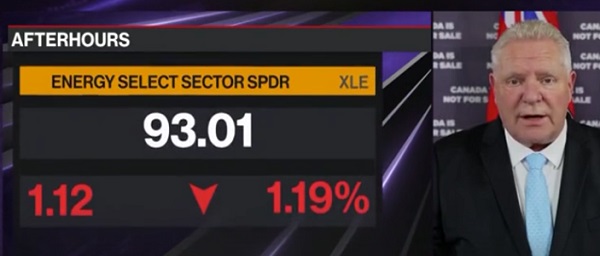
 2025 Federal Election2 days ago
2025 Federal Election2 days ago‘I’m Cautiously Optimistic’: Doug Ford Strongly Recommends Canada ‘Not To Retaliate’ Against Trump’s Tariffs
-

 Business2 days ago
Business2 days agoCanada may escape the worst as Trump declares America’s economic independence with Liberation Day tariffs
-

 Alberta2 days ago
Alberta2 days agoBig win for Alberta and Canada: Statement from Premier Smith
-

 Catherine Herridge2 days ago
Catherine Herridge2 days agoFBI imposed Hunter Biden laptop ‘gag order’ after employee accidentally confirmed authenticity: report
-
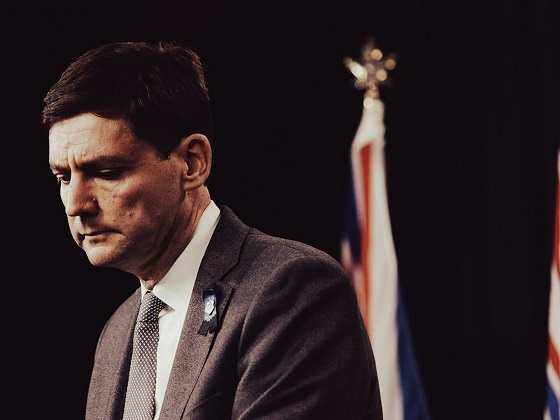
 Business1 day ago
Business1 day agoB.C. Credit Downgrade Signals Deepening Fiscal Trouble
-
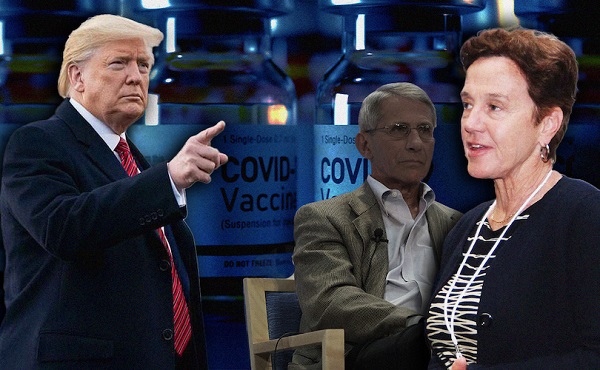
 COVID-1922 hours ago
COVID-1922 hours agoTrump’s new NIH head fires top Fauci allies and COVID shot promoters, including Fauci’s wife
-
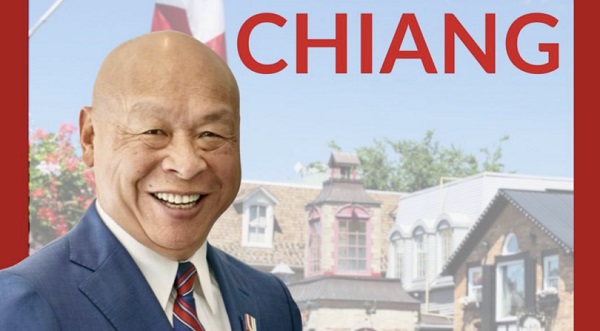
 2025 Federal Election2 days ago
2025 Federal Election2 days agoLiberal MP resigns after promoting Chinese government bounty on Conservative rival






